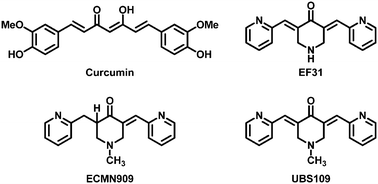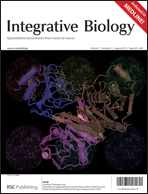Bone homeostasis is maintained through a balance between osteoblastic bone formation and osteoclastic bone resorption. Bone loss is induced due to decreased osteoblastic bone formation and increased osteoclastic bone resorption with various pathologic states. Osteoporosis with its accompanying decrease in bone mass is widely recognized as a major public health problem. Pharmacologic and functional food factors may play a role in the prevention of bone loss with aging. This study was undertaken to determine the effect of curcumin analogues (curcumin, EF31, ECMN909, and UBS109), which were newly synthesized, on osteoblastogenesis and osteoclastogenesis in vitro. Among these compounds, UBS109 had a unique stimulatory effect on osteoblastic differentiation and mineralization. UBS109 stimulated both basal and bone morphogenic protein-2 (BMP2)-increased Smad-luciferase activity, the Smad signaling of which is related to osteoblastogenesis. Such an effect was not seen with other compounds. Moreover, UBS109 potently suppressed tumor necrosis factor-α (TNF-α)-increased osteoblastic nuclear factor kappa B (NF-κB)-luciferase activity. In addition, EF31, ECMN909, and UBS109 had a suppressive effect on osteoclastogenesis as compared with that of curcumin. ECMN909 and UBS109 potently inhibited the receptor activator of NF-κB (RANK) ligand (RANKL)-increased preosteoclastic NF-κB-luciferase activity, in which NF-κB signaling plays a pivotal role in osteoclastogenesis. In the present study, curcumin analogue UBS109 was found to have a stimulating effect on osteoblastogenesis and a suppressive effect on osteoclastogenesis in vitro, suggesting an anabolic effect of the compound on bone mass.

You have access to this article
 Please wait while we load your content...
Something went wrong. Try again?
Please wait while we load your content...
Something went wrong. Try again?


 Please wait while we load your content...
Please wait while we load your content...